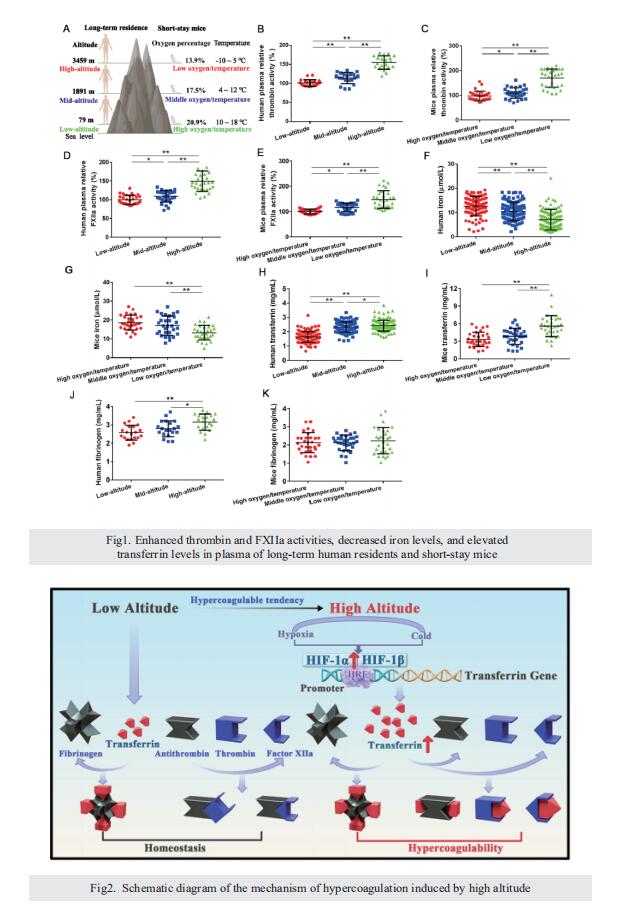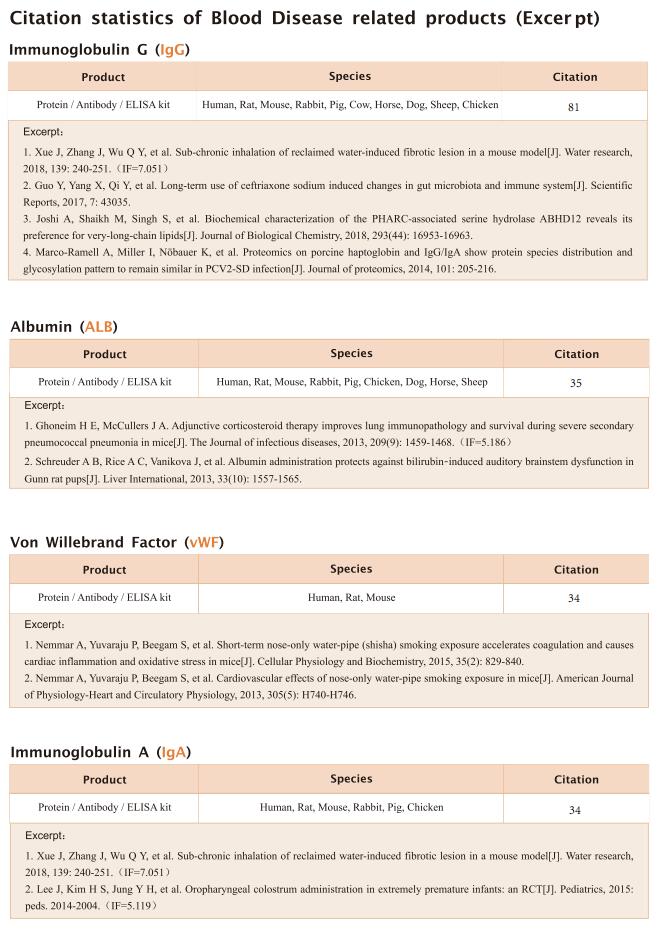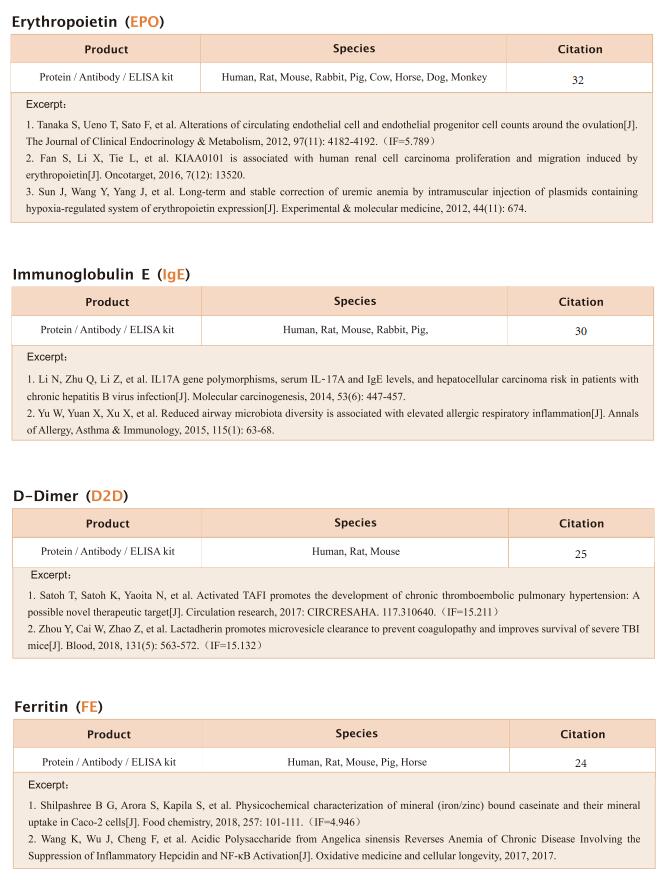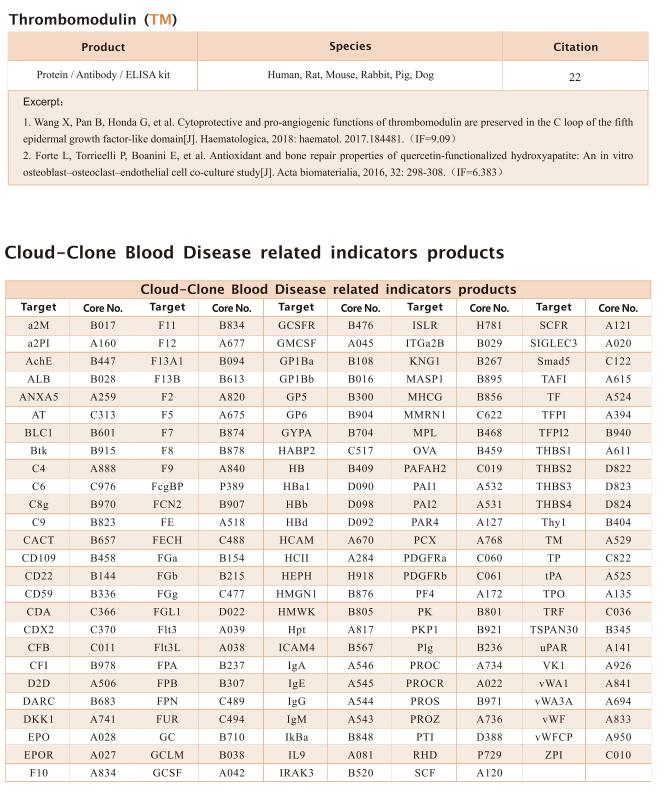Hypoxia and low temperature up-regulate transferrin to induce hypercoagulability at high altitude
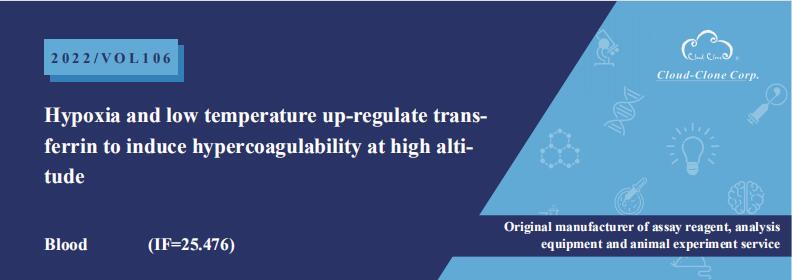
On August 30, 2022, Ren Lai, Kunming Institute of Zoology, Chinese Academy of Sciences, China, and his team published a paper titled “Hypoxia and low temperature up-regulate transferrin to induce hypercoagulability at high altitude” in Blood, which suggested low temperature and hypoxia up-regulated transferrin expression promoted hypercoagulability.

The kits [ELISA Kit for Transferrin (TF), SEC036Hu/CEC036Mu; ELISA Kit for Prothrombin Fragment 1+2 (F1+2), SEA710Hu/SEA710Mu; ELISA Kit for Coagulation Factor XII (F12), SEA677Hu/SEA677Mu] of Cloud-Clone brand was chosed in this article, we are so proud for supporting the reaserchers.
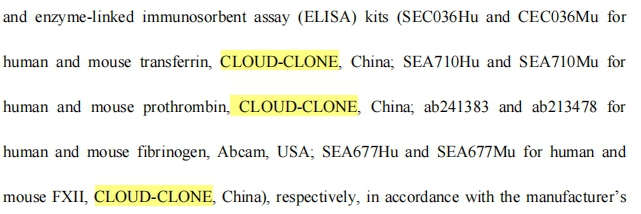
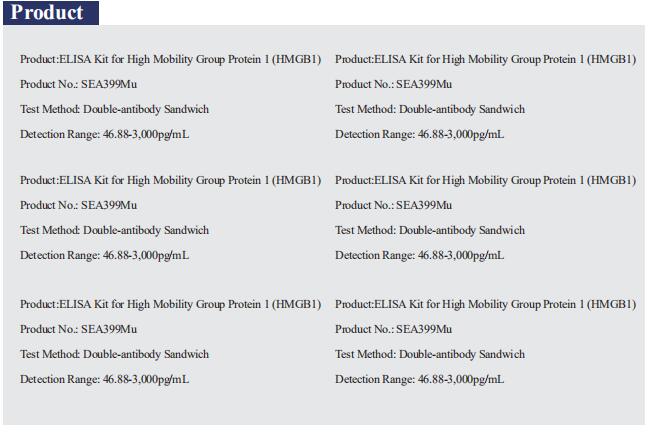
Studies have shown significantly increased thromboembolic events at high-altitude. We recently reported that transferrin could potentiate blood coagulation, but the underlying mechanism for high-altitude-related thromboembolism is still poorly understood. Here, we examined the activity and concentration of plasma coagulation factors and transferrin in plasma collected from long-term human residents and short-stay mice exposed to varying altitudes. We found that the activities of thrombin and FXIIa along with the concentrations of transferrin were significantly increased in the plasma of humans and mice at high altitudes. Furthermore, both hypoxia (6% O2) and low temperature (0 °C), two critical high-altitude factors, enhanced hypoxia-inducible factor (HIF)-1a levels to promote the expression of the transferrin gene, whose enhancer region contains HIF-1a binding site, and consequently to induce hypercoagulability by potentiating thrombin and FXIIa. Importantly, thromboembolic disorders and pathological insults in mouse models induced by both hypoxia and low temperature were ameliorated by transferrin interferences, including transferrin antibody treatment, transferrin down-regulation, and the administration of our designed peptides that inhibit the potentiation of transferrin on thrombin and FXIIa. Thus, low temperature and hypoxia up-regulated transferrin expression promoted hypercoagulability. Our data suggest that targeting the transferrin-coagulation pathway is a novel and may be a powerful strategy against thromboembolic events caused by harmful environmental factors under high-altitude conditions.
